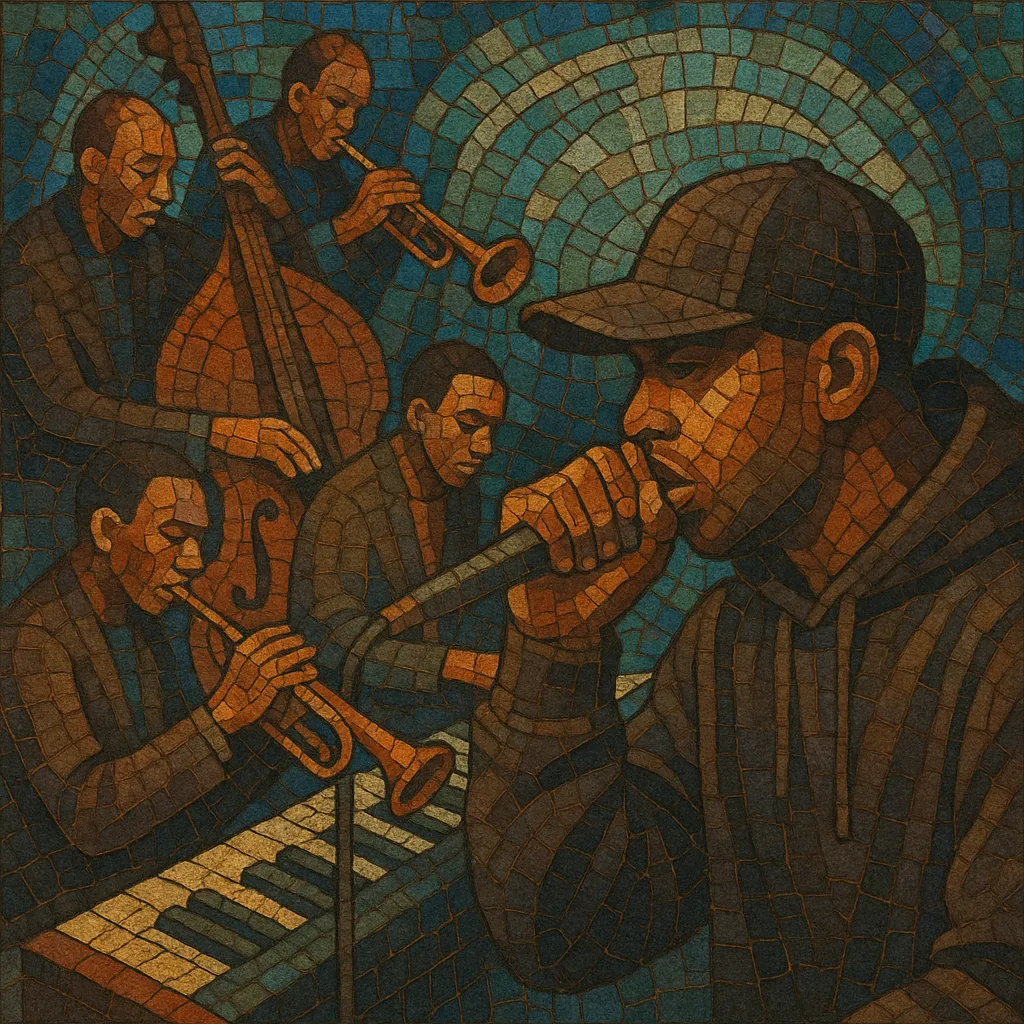Jazz rap is a fusion of hip hop and jazz that pairs laid‑back boom‑bap drums and MCs’ complex, conversational flows with harmonically rich jazz chords, walking or sampled bass lines, and horn, piano, or vibraphone motifs.
It typically relies on sampling from classic jazz—bebop, hard bop, cool jazz, and jazz‑funk—often pulling from Blue Note and similar catalogues, though many artists also use live bands to recreate the swing, brushwork, and modal colors of small‑combo jazz.
Lyrically, the style leans toward thoughtful, socially aware, and Afrocentric topics, mirroring the reflective mood of its instrumentals. The overall feel is warm, soulful, and head‑nodding rather than aggressive, with tempos commonly in the mid‑80s to mid‑90s BPM range.
Jazz rap coalesced in the late 1980s in the United States as hip hop producers and MCs began explicitly foregrounding jazz’s harmony, instrumentation, and swing. Early signposts included crews and DJs who sampled classic jazz records, flipped upright‑bass ostinatos, and framed them with boom‑bap breakbeats, setting the foundation for a reflective, musical alternative to harsher, minimalist rap productions of the era.
The early 1990s marked the style’s first peak. Artists associated with the Native Tongues movement—especially A Tribe Called Quest and De La Soul—brought jazz chords and horn riffs into mainstream rap, while Gang Starr blended DJ Premier’s jazz‑sampled beats with Guru’s calm, philosophical delivery. Digable Planets’ hits further cemented the aesthetic in pop culture, and projects like Guru’s Jazzmatazz formalized the idea of hip hop working directly with live jazz musicians. Meanwhile, Pete Rock & CL Smooth, Us3, and The Roots expanded the palette with richer arrangements and, in The Roots’ case, a full live band approach.
Though its mainstream visibility ebbed in the late 1990s, the sound persisted in underground and indie circles. Producers and MCs worldwide—across the U.S., Europe, and Japan—sustained a "jazzy" hip hop lineage that prized crate‑digging and musicality. In the 2010s, a new wave of albums and collaborations between jazz players and rappers (including band‑led projects and pianist/producer‑driven collectives) renewed attention to improvisation, extended harmony, and live rhythm sections in hip hop.
Jazz rap helped normalize lush chord vocabularies, swung rhythms, and live instrumentation in rap, paving the way for instrumental hip hop, lo‑fi hip hop and beats scenes, and parts of neo soul and trip hop. Its emphasis on musicality and reflective lyricism continues to shape underground hip hop aesthetics and cross‑genre collaborations between contemporary jazz artists and MCs.


